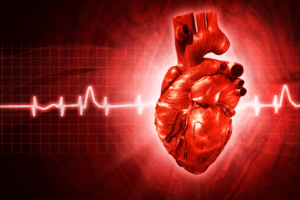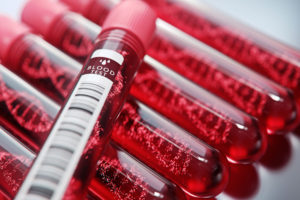High Blood Pressure (Hypertension)
High Blood Pressure (Hypertension) Overview
Blood pressure is recorded with 2 numbers. The systolic pressure (higher number) is the force at which your heart pumps blood around your body. The diastolic pressure (lower number) is the resistance to the blood flow in the blood vessels. They’re both measured in millimeters of mercury (mmHg).
As a general guide:
- High blood pressure is considered to be 140/90mmHg or higher (or 150/90mmHg or higher if you’re over the age of 80)
- Ideal blood pressure is usually considered to be between 90/60mmHg and 120/80mmHg
Blood pressure readings between 120/80mmHg and 140/90mmHg could mean you’re at risk of developing high blood pressure if you do not take steps to keep your blood pressure under control.
Everyone’s blood pressure will be slightly different. What’s considered low or high for you may be normal for someone else.
Blood pressure is determined both by the amount of blood your heart pumps and the amount of resistance to blood flow in your arteries. The more blood your heart pumps and the narrower your arteries, the higher your blood pressure. You can have high blood pressure for years without any symptoms. Uncontrolled high blood pressure increases your risk of serious health problems, including heart attack and stroke. Fortunately, high blood pressure can be easily detected.

Signs and Symptoms of High Blood Pressure (Hypertension)
Following are some of the signs and symptoms of high blood pressure:
- Severe Headaches
- Nosebleed
- Fatigue or confusion
- Vision problems
- Chest pain
- Shortness of breath
- Irregular heartbeat (arrhythmias)
- Blood in urine (hematuria)
- Pounding in the chest, neck, or ears
Hypertension patients may also sometimes feel the following other symptoms related to high blood pressure:
- Dizziness
- Nervousness
- Sweating
- Trouble sleeping
- Facial flushing
- Blood spots in eyes
Types of High Blood Pressure (Hypertension)
Following are the two types of high blood pressure:
Primary (essential) Hypertension
For most adult patients, there’s no identifiable cause of high blood pressure. This type of high blood pressure, called primary (essential) hypertension, tends to develop gradually over many years.
Secondary Hypertension
Some patients have high blood pressure caused by an underlying condition. This type of high blood pressure, called secondary hypertension, tends to appear suddenly and cause higher blood pressure than does primary hypertension. Following are some of the various conditions and medications can lead to secondary hypertension:
- Adrenal gland tumors
- Birth defects you’re born with (congenital) in blood vessels
- Obstructive sleep apnea
- Illegal drugs, such as cocaine and amphetamines
- Kidney disease
- Medications, such as birth control pills, cold remedies, decongestants, over-the-counter pain
relievers and some prescription drugs - Thyroid problems
Causes of High Blood Pressure (Hypertension)
Researchers are still unclear what mechanisms cause blood pressure to slowly increase. A combination of factors may play a role. These factors include:
- Genes: Some people are genetically predisposed to hypertension. This may be from gene mutations or genetic abnormalities inherited from your parents.
- Physical changes: If something in your body changes, you may begin experiencing issues throughout your body. High blood pressure may be one of those issues. For example, it’s thought that changes in your kidney function due to aging may upset the body’s natural balance of salts and fluid. This change may cause your body’s blood pressure to increase.
- Environment: Over time, unhealthy lifestyle choices like lack of physical activity and poor diet can take their toll on your body. Lifestyle choices can lead to weight problems. Being overweight or obese can increase your risk for hypertension.

日本のお客様は、ベイバイオサイエンスジャパンBay Biosciences Japanまたはhttp://baybiosciences-jp.com/contact/までご連絡ください。


